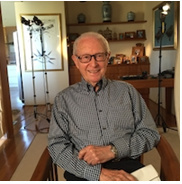###The Heart Bus
Monday 18 July at 8pm
Introduced by Bob Katter MP
Cardiologist Rolf Gomes is putting the heart back into rural and regional health care.
His brainchild is ‘the heart bus’, Australia’s first mobile cardiac clinic, delivering state-of-the-art cardiology diagnostic testing equipment on the back of a truck to rural communities. Dr Gomes says there’s a real need for the service, because if you live in the country you are 44% more likely to die from heart disease than if you’re a city dweller.
“You can’t look at a situation like that and say the way to address that is to maintain the status quo, because whatever already exists, clearly we need to be doing more.” – Rolf Gomes, cardiologist
Born in Calcutta, Dr Gomes started out as an electrical engineer before turning to medicine.
The first time he saw a beating heart, with its “valves and plumbing and electrics”, he was “hooked”.
“It’s an amazing organ. It goes for 70 to 80 years. It never stops. You couldn’t go to Bunnings and buy a pump off the shelf and say I’ll come back in 80 years and hope it’s still working.” – Rolf Gomes, cardiologist
While working as a registrar in remote communities, he experienced first-hand the challenges of trying to diagnose and treat patients without the specialist and diagnostic services that “people in the city take for granted”.
As a cardiologist he identified the problem, but as an engineer he sought to solve it.
The idea for ‘the heart bus’ came to him while running his own cardiology practice in Brisbane.
“I’d walk into my cardiology practice and see treadmills and ultrasound machines and heart rhythm monitoring machines and I thought why can’t we put all this equipment in a mobile vehicle and take it out there?” – Rolf Gomes, cardiologist
“I really didn’t want to burst his bubble but I thought ‘tell him he’s dreaming’.” – Andrew Barron, general manager, St Andrew’s War Memorial Hospital
Rolf Gomes spent five years drawing up plans and door-knocking before landing company sponsorships to build the one-million-dollar truck. An $800,000 second mortgage on his young family’s home boosted the funds to keep the clinic on the road for twelve months.
“There’s no point trying to fight Rolf on anything. Once he sets his mind to it, he’s going to do it.” – Kylie Gomes, wife
“We all felt that he was doing a brave thing here.” – Dr Desley Marshall, Royal Flying Doctor Service board member & rural GP
Dr Gomes acknowledges that it was an “ambitious project”. But he was prepared to take the risk.
“If the project failed, it failed. I had no reputation to lose.”
Australian Story goes on the road with ‘the heart bus’, following people who might otherwise not seek treatment and die prematurely.
We also find out about Dr Gomes’ plans to expand ‘the heart bus’ service.
“This is just the most amazing project for the bush that I’ve ever heard of.” – Donna Stewart, former mayor of Balonne Shire
